What are phases, anyway?
We have already dealt with the individual switching regulators, but in the broadest sense it is only a single phase. Here, however, physics sets very strong limits. If you look at the pictures of the boards of the RTX 4080 FE and RTX 4090 FE, you will also notice that the lowest voltages like 1.8 Volt are generated with a simple buck converter. However, you can neither realize the high currents of a GPU nor achieve a good ripple with a single switching regulator. There must be something else, because the picture alone shows that this can not yet fit so!
The multiphase DC/DC converters we need are a nice teaching example of the so-called equilibrium principle in electronics. So we have to pay a price for a desired advantage in the form of a compensating disadvantage. If we think back, we also know that the ever faster switching speeds to increase the processing power of such a GPU has simultaneously led to the necessary reduction of the typical base supply voltage from initially 5 Volt to 3.3 Volts and now to less than 1 Volt.
In turn, supply currents have risen sharply as circuit complexity has increased. The reason that multi-phase DC/DC converters are used on a graphics card is, of course, also due to the limitations of the output filter components (coils, capacitors). In order to guarantee a low voltage ripple at the output at higher load currents, their values cannot be selected arbitrarily high for both technical and economic reasons. In addition, care must be taken with the space and height. This is only possible with multiphase switching controllers.
Unfortunately, I can’t spare you a bit of theory here either. So again slowly: During the repetitive charge and discharge cycles (we already know) the output voltage of each switching regulator changes by the peak-to-peak value of the so-called ripple (vripple). However, when the load current increases, the discharge current and the charge current also increase. In plain language, this means that the current flowing through the MOSFETs, the coil and the capacitor is now increasing.
From the first page we know that the ripple voltage must be kept as small as possible by increasing the switching frequency and/or the L and C values. Here, each board partner still has some creative leeway. However, to keep efficiency as high as possible, the MOSFETs, coil and capacitor must have the lowest possible series resistance, which in turn leads to bulkier components. EMC concerns set a limit to the maximum switching frequency (we already know that, too). And now? Multiphase converters solve this problem by sharing the load current through multiple components and things get interesting.
A disadvantage of the multiphase implementation is the higher cost of the components, since at least two more MOSFETs or a DrMOS/SPS and another inductor are required for each additional phase. Furthermore, the PWM controller must also be able to implement this multiphase control by realizing phase-shifted multiple output signals. Now, however, the inductor and capacitor sizes can be much smaller, requiring much less space. In addition, the maximum amplitude of the combined output voltage is reduced, so the current flows more smoothly. Also electromagnetic interference is reduced and you can even reduce the degree of filtering at the input (example see picture below). In addition, the response time during load changes decreases (very important!) and the adjustment time is reduced.
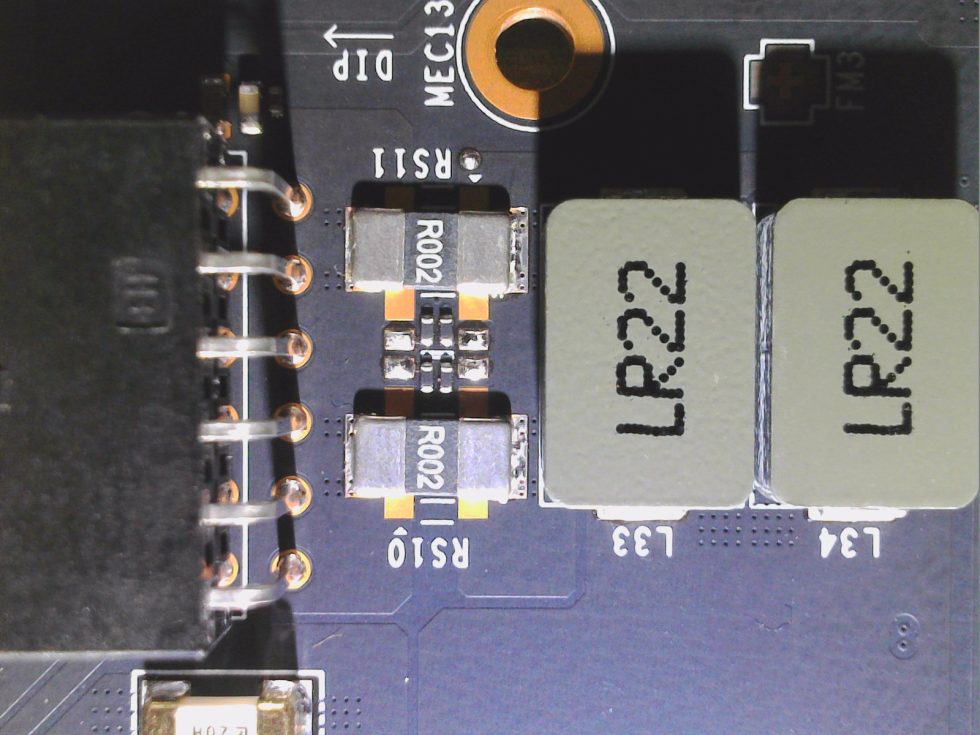
The difference between phase and voltage regulator
In the minimum case, there is exactly one single voltage regulator per phase. In the picture we now see the GeForce RTX 4080 FE, which uses a good PWM controller (MP2891 from Monolith, picture further up on the right) to generate 13 real phases for the GPU (NVVDD, blue) and thus drives a voltage regulator with a DrMOS in each case. Extra gate drivers are not needed, resulting in a very compact board. I see the FE as a good teaching example of how far you can really go with single phases without it becoming too expensive and time-consuming. Here, the number of phases still matches the countable voltage regulators 1:1.
The next example is the NVIDIA GeForce RTX 4090 FE. Here we count 20 switching regulators for the GPU (NVVDD), but the installed PWM controller could natively only generate a maximum of 16 phases on rail 1. Now a compromise takes effect, which is quite suitable, because also the development of the input EMC filters is easier, if there are not too many phase-shifted input return currents flowing in the circuit. So the card has “only” 10 real phases! However, the built-in PWM controller allows two switching regulators to be operated in parallel on each phase!
This achieves two things: First, the currents per switching regulator of a phase decrease by half and thus also the internal resistance in the sum and second, lower currents flow in the coils and the Lorentz force decreases. Ergo, it becomes quieter and it also buzzes and squeaks significantly less or not at all! The coils of the thirteen individually controlled switching regulators of the RTX 4080 FE are also only rather inconspicuous in total because the card has a lower power consumption than the RTX 4090 FE and lower currents are already in play per se (“energy portions”).
So you can see that the ratio of phases and switching regulators always has a very important background as well. On the last example, we see an AMD board partner card of the RX 7900 XTX and count 21 switching regulators. AMD advertises its own reference card with 20 phases in the slides, but this calculation doesn’t really add up either. But I’d rather wait for the finished product at launch before I go out on a limb and violate any NDAs.
Of course, you can spoil the most beautiful design with extremely lousy coils, but I’ll get to that later. Now I have to take another look at the marketing of some providers.
Marketing chatter vs. reality
Most graphics card manufacturers count the switching regulators all as phases, even if it is against all reason and logic. After all, big numbers sell better. And then you add the smaller items for the memory and, in AMD’s case, VDDCI and SoC as well. Sounds good, but in the end says little or nothing. Because then you could also add the buck converters for 5 volts, 1.8 volts, PEXVDD, and so on. This would then become increasingly pointless.
Here I have a nice example of a card from Zotac, which is advertised with 16+4 power phases. No, the part actually has only 8 + 2 phases, using for NVVDD the uP9512R shown above (the R stands for parallel connection) and the memory relies on a double buck controller with two single phases and parallel connection. There are 16+4 switching regulators, but that sells worse because no one can do anything with it. But now you are smarter and see through the sellers. And let’s put it this way: Even doubled, the danger of getting into the rattling and whining of the coils from 300 watts onwards during fast load changes with only 8 phases is quite real. Doesn’t have to be, but it usually will be.
By the way, this so-called “Power Boost” is nothing more than a group of simple but tricky MLCCs that work de facto as backup capacitors. That’s a good sell, but if you’ve been paying attention, you’ve read the paragraph on sizing smoothing. The better the topology and component selection, the less you’ll have to improve later and the rest is done by the MLCC directly under the GPU socket, which has to be installed anyway.
Special forms and peculiarities
In order to increase efficiency, not all phases have to be controlled equally and to the full extent at low loads. This works in a similar way to the cylinder deactivation in a car. You can also see it with an infrared camera, for example, when only individual areas under the switching regulators show higher temperatures in idle or normal desktop mode (Word etc.). Unfortunately, this cannot be read out by software, only measured at the PWM nodes with an oscilloscope.
Another interesting nuance is a so-called load balancer. Normally, the switching regulators are supplied from a single source, either the external power connector or the mainboard slot (PEG). But if you don’t want to overload the slot (the PCI SIG specifies a maximum of 5.5 amps on 12 volts) and still don’t have enough power with the external connection, then it can be quite useful to intelligently split one of the switching regulators (or one of the phases) to both sources. If you don’t do that, you’ll end up with some bad luck in a situation like the AMD Radeon RX 480 at the time, where the manufacturer thought they could get by with an external 6-pin to imply efficiency.
The load balancer, on the other hand, uses both sources proportionally, which can even be controlled in the ideal ratio. The picture above shows the discrete switching regulator from the PEG (turquoise) and the corresponding switching regulator from the PCIe connector (yellow), both driving the same PWM node (orange). So you use two voltage regulators in parallel or alternating, separated on the input side, with a common output, analogous to a real parallel circuit.















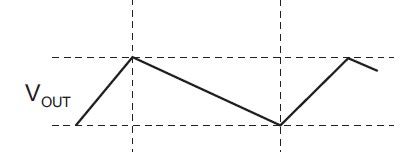
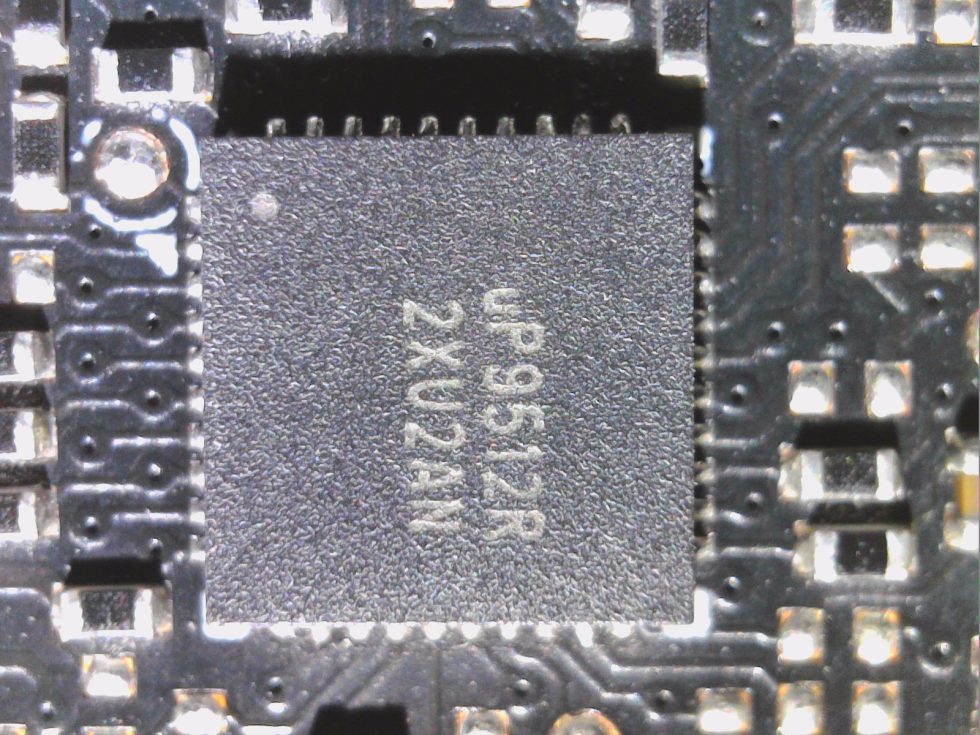
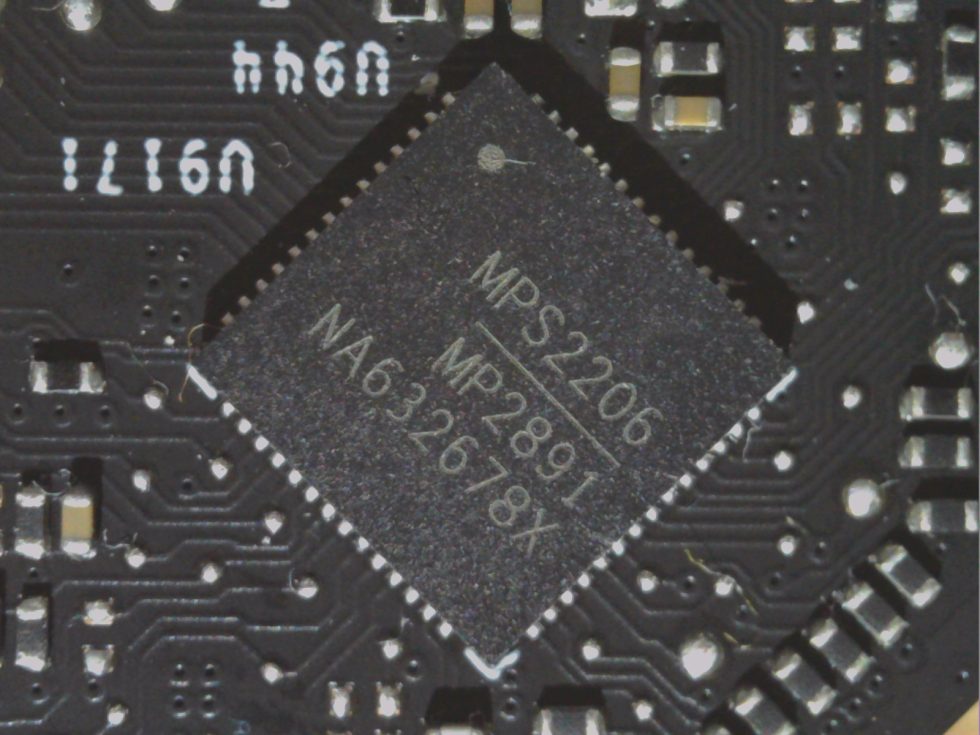
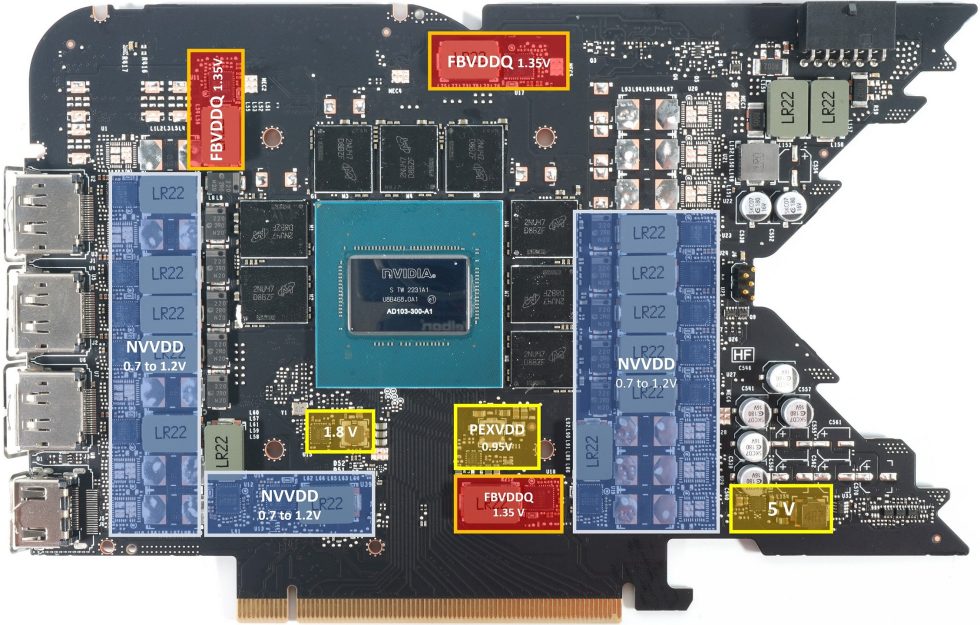
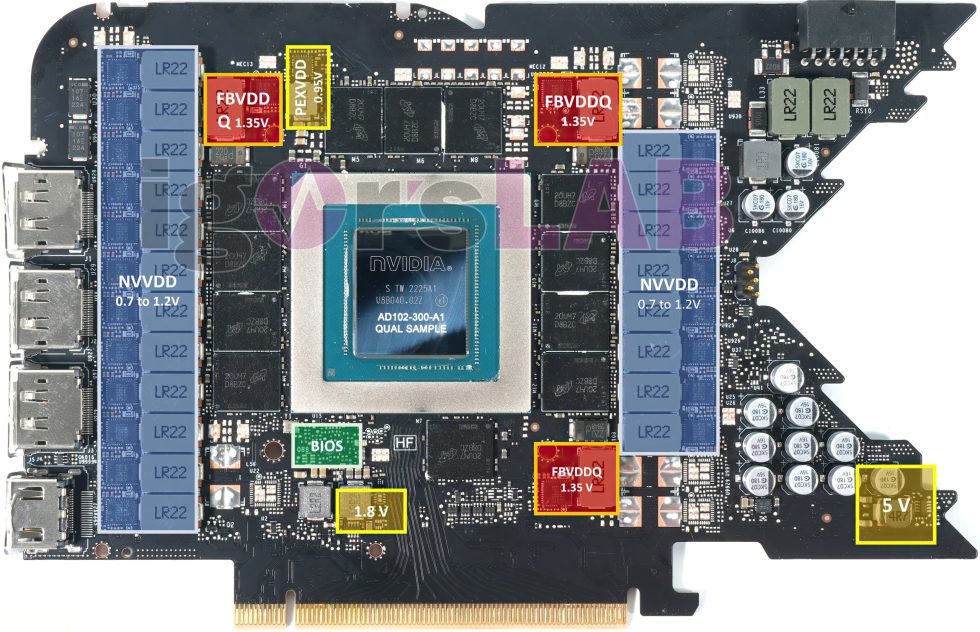
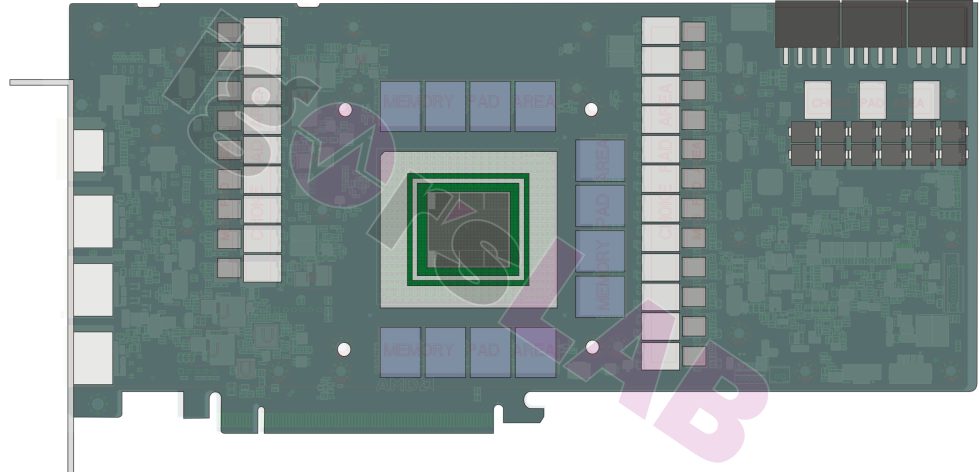

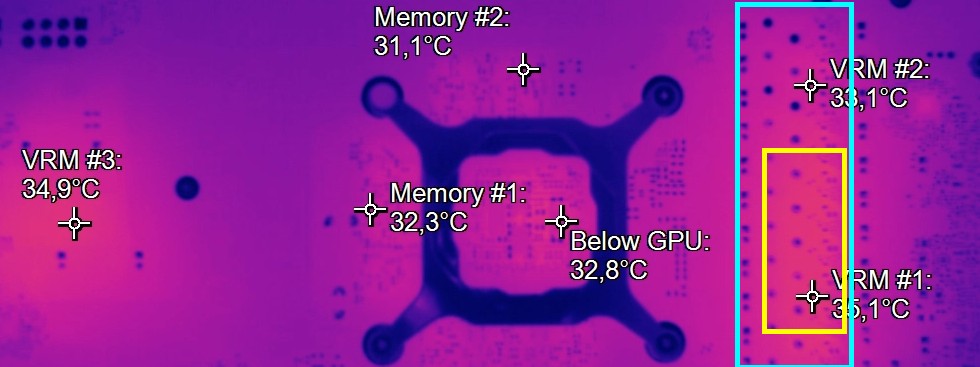








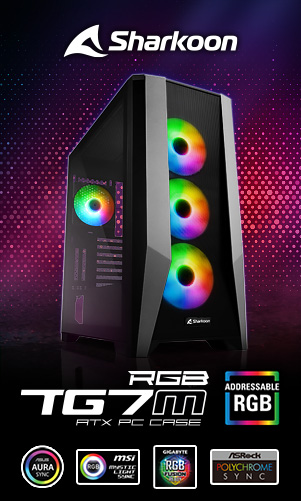







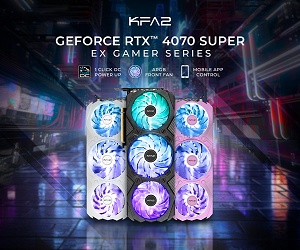


91 Antworten
Kommentar
Lade neue Kommentare
Urgestein
Veteran
1
Urgestein
Veteran
Veteran
Urgestein
Veteran
Veteran
Veteran
Urgestein
Urgestein
Veteran
1
Veteran
1
Urgestein
Mitglied
1
Alle Kommentare lesen unter igor´sLAB Community →